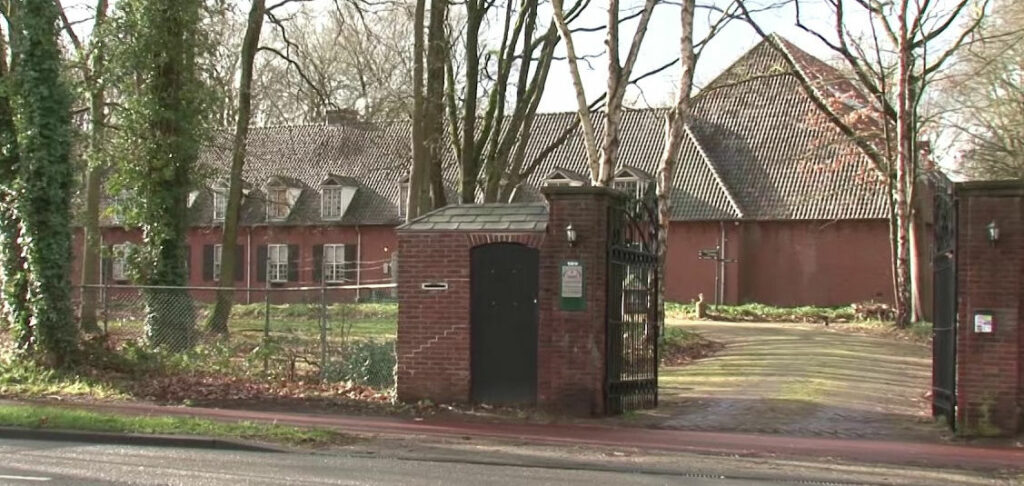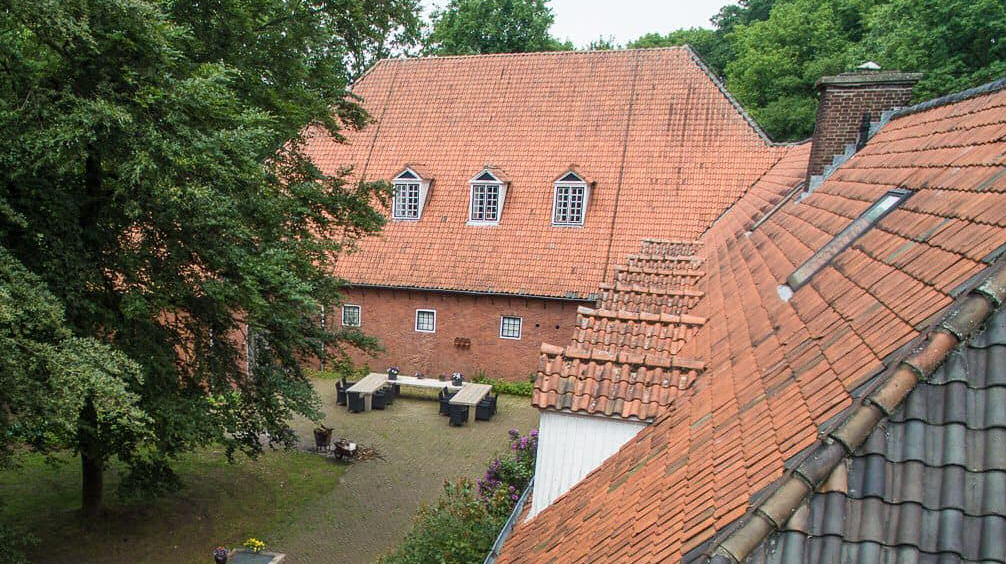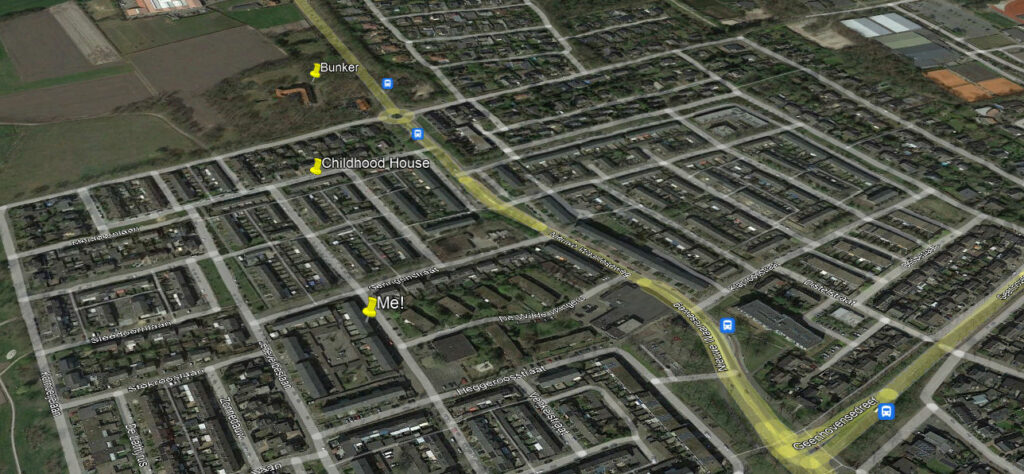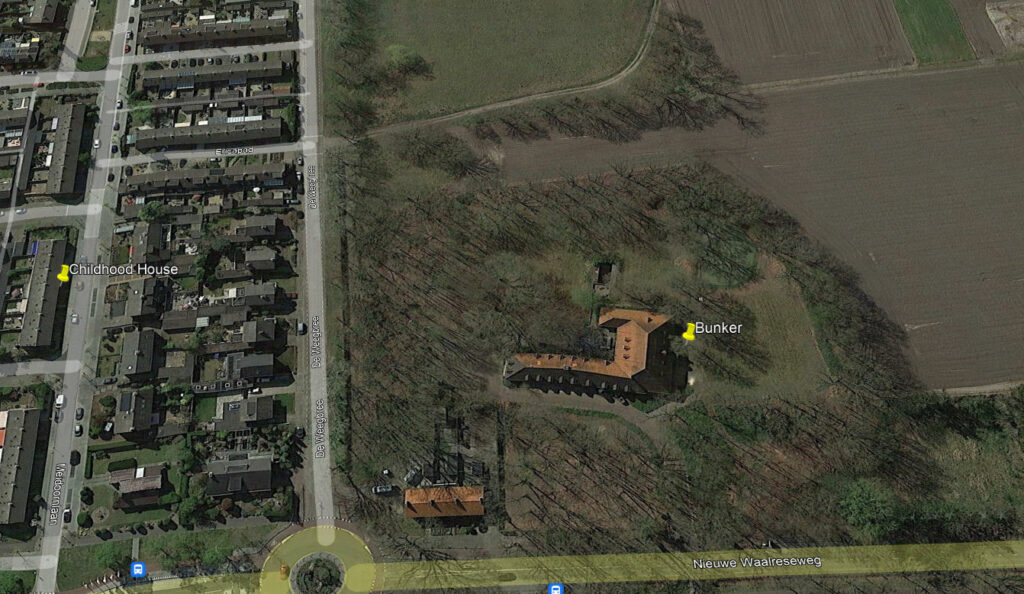I wrote this post in relation to a portfolio item that I recently posted, to talk a bit about the history of the building that I've built in 3D. Make sure to have a look at the Birkenhof portfolio page when you're done here. There's also a gallery at the bottom of this page.
I live in a Dutch town called Valkenswaard. This is an interesting small town with more than 31.000 inhabitants, near the Belgian border. It was occupied by the Germans during the Second World War. The Germans built a number of captivating places while they were here, of which we can still see a few remains today. Alongside the coastline is where we find a lot of bunkers known as the famous Atlantic Wall defense line. You’ll recognize the traditional Regelbau bunkers in films such as D-Day, Saving Private Ryan, Band of Brothers, Dunkirk, etc.
This town where I live is situated quite far from the coastline, however we also have a bunker here. Imagine that. It was built by the Germans in 1942 and unrecognizable as a bunker at first sight. That was of course the whole idea of the Germans when they built it.
Nowadays, it is called Herenboerderij de Bunker, but it was called Birkenhof in those days. This translates to Birch Garden as it was surrounded and covered by birch trees, somehow very convenient to help camouflage their antenna equipment.

Everyone in my neighborhood knew the bunker, but I wasn’t aware of what it actually was until I was 12-14 years old and heard of its story at school. Only then I understood why it was called "de bunker". As kids, me and my school friend Peggy often played in the area surrounding this bunker after school time. It was fun and adventurous. Peggy lived in one of the three houses built very close to the compound at a much later time. Her backyard was practically bordering the bunker. Once in a while we would sneak over the fence as it was exciting for us as kids to explore such a place, and doing something that wasn’t supposed to be done was awesome too. Our imagination took us on a wild adventure, and those were such good times. As one can imagine, this is how I became familiar with this subject as a youngster and interested in it as an adult.


Interesting to know is that the house I lived in when I was a kid and the one I live in now are really close to the bunker. It is just a two-minute walk. This residential area was built in the early 1970's as part of a big project at the edge of Valkenswaard. What once was just farmland and grass land grew into a lively neighborhood and expanded the town enormously. This made the bunker no longer a building outside the town, but an interesting object at the very edge of it and amidst a residential area. It is still there.


In 1942, when the bunker was built, the location had been carefully chosen by the Germans. Placing it in the outskirts of Valkenswaard, alongside the road to the neighboring town Waalre, surrounded by nature and farms, it really looked like just another farm. By looking like a farm, there was no suspicion when observed from the air by the British pilots sent out to observe potential locations occupied or used by Germans. From the ground the building was rather large for a farm, but from the air it was a perfectly normal looking farm. Obviously, this was the perfect disguise for a communication center that was supposed to become a major hub for all radio traffic, especially in the communication with the U-Boats. It was also very useful to listen and spy on all enemy’s radio communications to be directed to Berlin.
People in Valkenswaard were aware that something was going on right on the outskirts of their town, but they had no idea of what exactly was going on there. They did notice the trucks with building materials and movement of people, but they just went on with their lives. They had other things in their heads.
At some point, two youngsters decided to take a look around, but they were immediately caught by the Germans. This was a warning that this place was an absolute no-go area, strictly forbidden. So a large fence was built around it, an agreement between the Germans and the local authorities was signed stating that anyone caught snooping around or trespassing would immediately be shot. No questions asked.
Naturally this secured the place and the Germans continued building their communication center, the place became secluded, and the people stayed away. It was just a regular farm with no taste for strangers.
The local resistance that was associated with Groep Albrecht reported at some time to the British Intelligence that this location looked as if it could be a tactical target occupied by the Germans. The British thought about bombing the place soon after, however they didn’t go ahead because there were already allied forces coming close. It was only after the war was over that it became clear to everyone what the Germans had built in Valkenswaard, and that they had been quite good at spying on radio waves and at a very large scale.
When the allies freed the South of The Netherlands, they took hold of the bunker but didn’t really occupy or use it as it was of no use to them. Besides, the Germans had already abandoned the building and had taken everything that was of any use with them, all their modern equipment was gone when the British arrived. All the time and effort to build, install and use, all the money and manpower invested in this advanced communication center was used just for a couple of months before they had to retreat back to Germany. They actually stripped the whole place of everything, but the building remained intact.
After the war, the building just stood there. Later it became useful for the Police Department (Marechaussee in the photo) and as the base for the Fire Department. As the firefighters later used it for training, the building was severely damaged. Then it stayed empty for a while, and local authorities had no plans for it. For a while it was squatted by a group of artists and free spirits. Then along came Hans, the current resident, who through some lease-arrangement with the local government came to be the responsible person for the building, and he restored it with great effort. It is nowadays a bed and breakfast, also it has two escape rooms, and it has a few spaces to facilitate group trainings, lectures, etc. You can read more about these activities on their official website.
Here are some links to other interesting pages regarding the bunker.
Hopefully you found this little history lesson appealing. An article like this may seem a bit out of place on a portfolio website like this one, and it might be more suited on a website about history or that is focused on similar content. But since I re-created this historic monument in 3D, I thought it might bring some extra flavor to my work to those who are interested. I'm curious to see in the website statistics whether this specific article will bring in visitors that have no interest at all to see my portfolio, but found their way here through a search engine. Time will tell.
Now that you've learned about the history of this building, you should definitely take a look at this page to see what I've built in 3D!